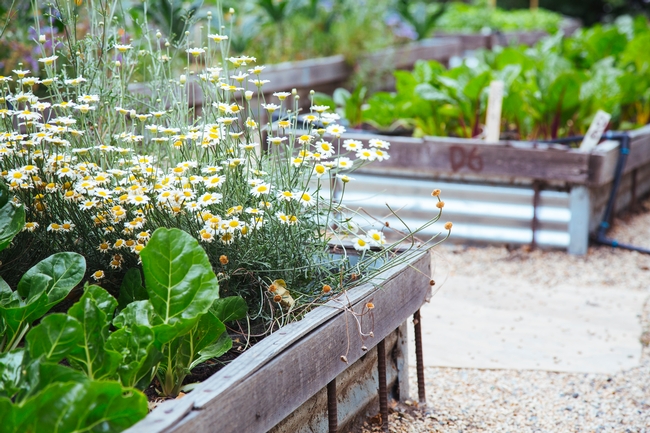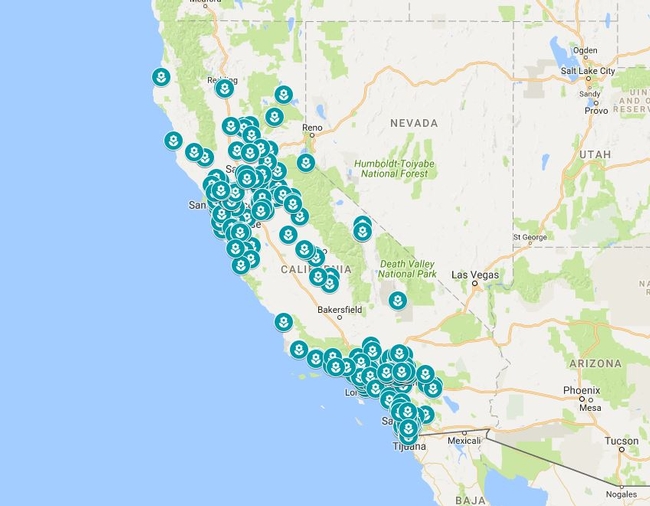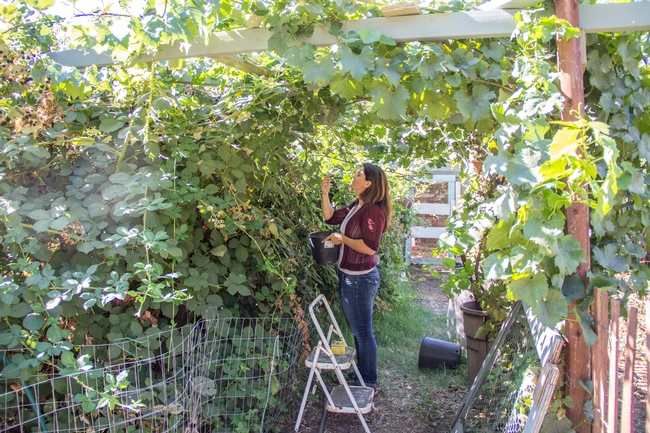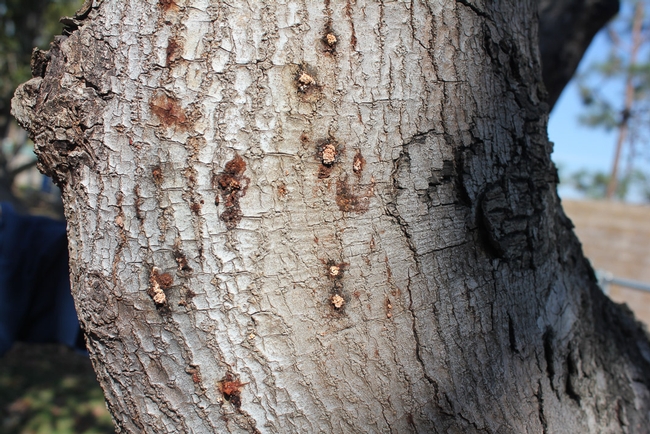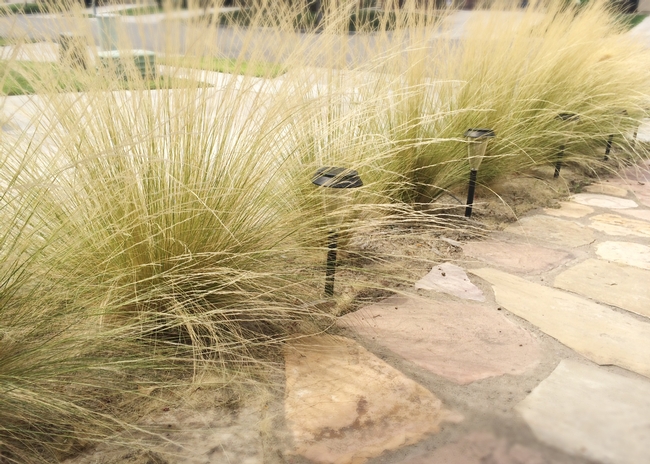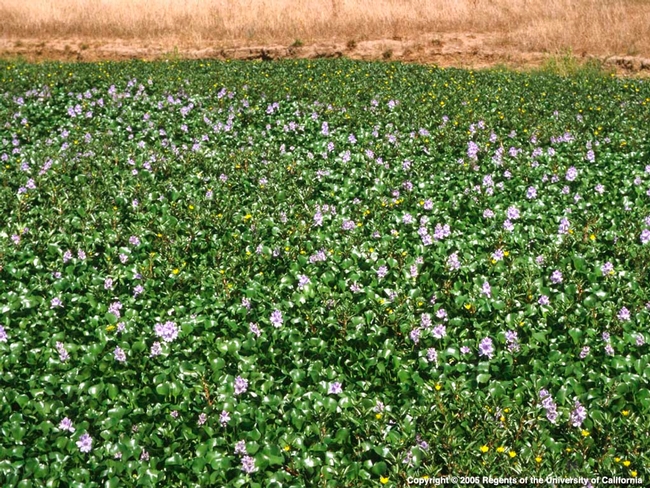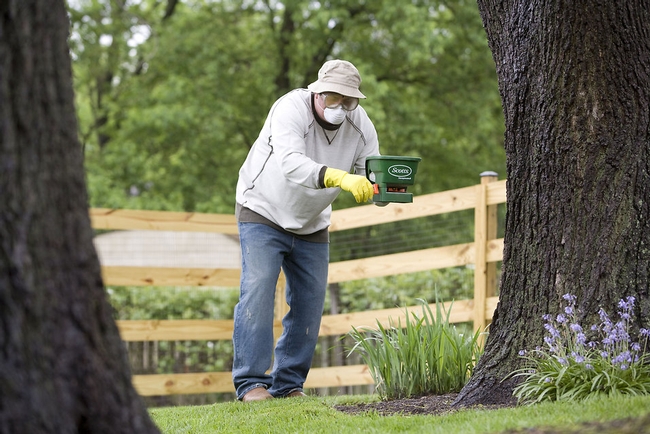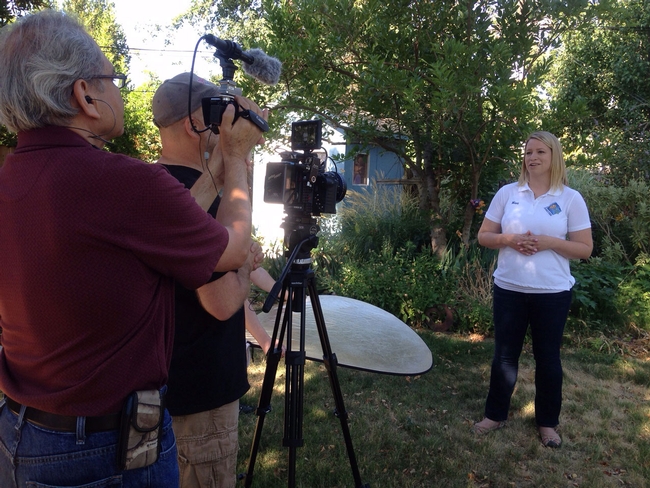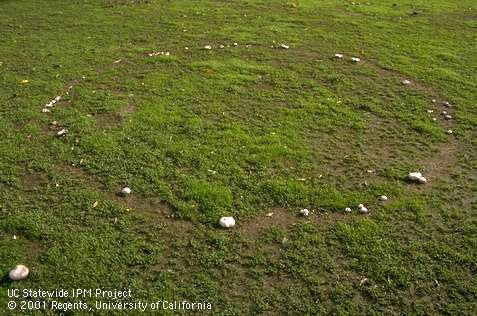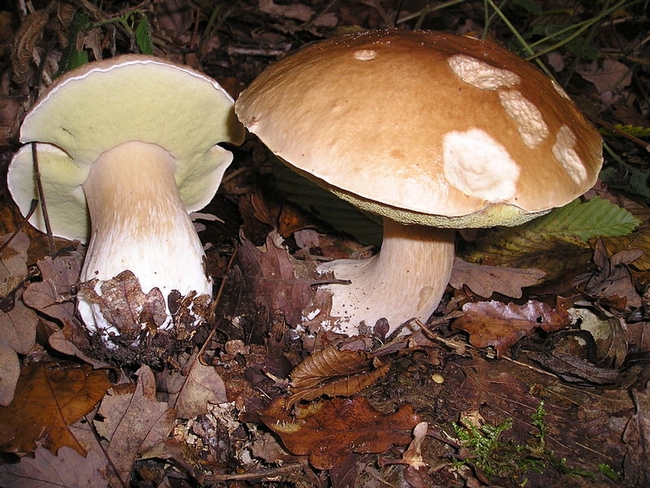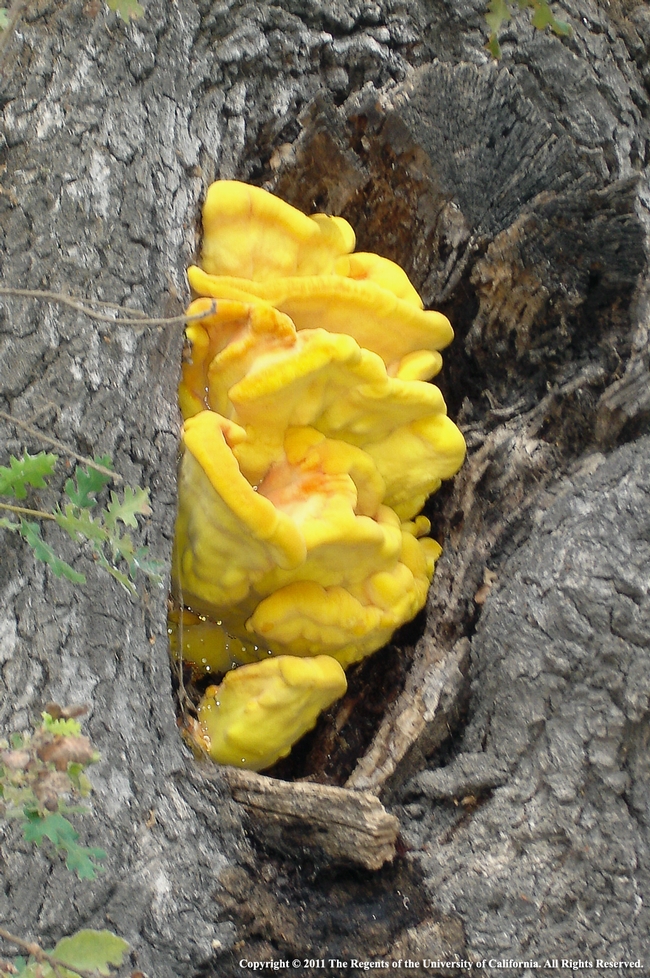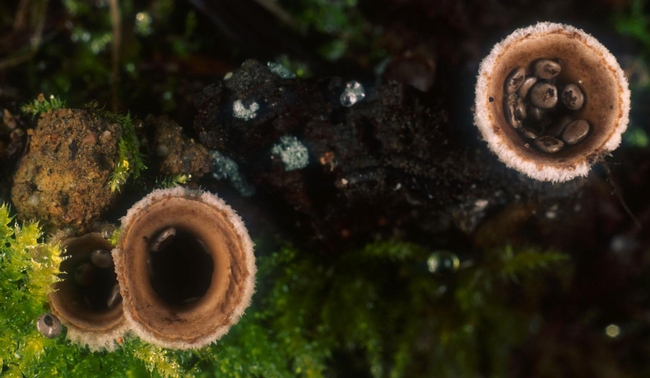Posts Tagged: UC Master Gardener Program
Visit a UC Master Gardener demonstration garden, learn and be inspired
Birds are chirping, the sun is shining and flowers are in bloom – it is time to get out into a garden and enjoy nature's beauty. UC Master Gardeners have been working hard to bring demonstration and community gardens to life across California, and volunteers are eager to teach how you can create sustainable splendor in your own landscape.
The UC Master Gardener Program is in your community
Be inspired. Visit a garden that has the power of the University of California and the UC Master Gardener Program behind it. With thousands of volunteers, hundreds of demonstration, school and community gardens across California and programs in 50 counties plus Lake Tahoe basin it is easy to discover the joy of gardening in your community.
Hit the road and get excited about gardening
UC Master Gardener demonstration gardens showcase best practices for garden management from plant selection to ground covers and irrigation. Demonstration gardens can appeal to everyone as they often include multiple themes like bumble bees, growing veggies, historical roses and low water–use plants.
Things you can discover in a demonstration or community garden:
- Mediterranean or native plants
- Roses
- Ornamental grasses
- Succulents
- Orchard trees and vegetables
- Pollinator habitats
- Composting
- Irrigation methods
- Mulch
Whatever your interest, you'll be sure to take something away from your visit to one of the many gardens across California. Find a location by visiting the UC Master Gardener Program garden map: http://bit.ly/2qqWRM4.
“When on a road trip I love to stop, stretch my legs and walk around a garden in a new town or city. It gives me an opportunity see new and unique plants that grow in different areas, plus I have the opportunity to recharge,” says UC Master Gardener volunteer Lauren Hull. “Recently, I was driving to Lake Tahoe and made a point to stop and visit the Sherwood Demonstration Garden, it was the perfect break during the long drive!”
UC Master Gardener classes share science-based gardening practices
For more direct educational opportunities, attend a gardening workshop hosted by local UC Master Gardener Program. Workshops are free or very low cost and cover a vast array of gardening topics. To find a UC Master Gardener event in your area, visit: mg.ucanr.edu/Events.
As you plan your summer travel, consider attending a workshop or event where you are vacationing. The UC Master Gardeners of Orange County are teaching the power of perennials on May 20, UC Master Gardeners of Santa Barbara County will present at the Santa Ynez Valley Earth Day celebration May 21, the UC Master Gardeners of Tuolumne County will have a Kids' Day in the Garden on June 3 … and so many more events to choose from!
“Attendees at workshops, classes and on demonstration garden tours can expect to hear from gardening experts in their local community. UC Master Gardener volunteers have been trained by UC scientists to become a 'master' in the garden and are proud to share their expertise and knowledge with an inexperienced gardener or an industry professional,” said Missy Gable, UC Master Gardener Program director.
Take ideas home
Whether your landscape needs a total overhaul, a few new plants or nothing at all, the knowledge and new ideas gained from workshops and demonstrations gardens is inspiring. Invite bees, butterflies and hummingbirds into your life by adding pollinator friendly plants to an existing landscape. Become more water-wise by adding mulch, changing out sprinkler heads and replacing high water user plants. Continue growing as a gardener by staying connected with your local UC Master Gardener Program, and stopping at demonstration gardens throughout the state.
The UC Master Gardener Program extends to the public free UC research-based information about home horticulture and pest management. In exchange for the training and materials received from the University of California, UC Master Gardeners perform volunteer services in a myriad of venues. If you are interested in becoming a certified UC Master Gardener contact your local UC Cooperative Extension office.
Early detection to prevent invasive pests – National Invasive Species Awareness Week
According to the Center for Invasive Species Research (CISR) at UC Riverside, “California acquires one new exotic species, on average, every 60 days. At this rate, around six new species establish in California each year. Estimated losses arising from the uncontrolled population growth of these pests amounts to an estimated $3 billion per annum.”
Exotic plants and pests can quickly turn invasive in their new environments because they no longer subject to natural predators or diseases that kept their populations under control in their native territories. Once an invasive pest starts to rapidly colonize and spread, it becomes increasingly more difficult to eradicate, causing both environmental and economic damage.
Prevention and early detection is key
The UC Master Gardener Program and its more than 6,000 volunteers play a critical role in helping stop and prevent the spread of invasive plants and pests in California through early identification and prevention.
Another of the many ways UC Master Gardeners are making a difference in early detection and prevention of invasive species is the participation in PlantRight's annual Spring Nursery Survey. Every year volunteers visit hundreds of retail nursery locations tracking the location of invasive plants being sold. The annual Spring Nursery Survey information helps the nursery industry replace invasive plants with environmentally safe alternatives.
Trusted resources and information
Since 1981, the UC Master Gardener Program has been an industry leader in extending UC research-based information about home gardening to the public. The UC Master Gardener Program's enthusiastic volunteers engage the public, share information, identify pests and recommend sustainable solutions. Contact your local program for questions about invasives by visiting mg.ucanr.edu.
So this year participate in National Invasive Species Awareness Week (Feb. 21-27) and share this information and its trusted resources like an “invasive.” Educating friends, family and neighbors is an important step in early detection and prevention!
Skip landscape fertilization during the drought
"When plants are under drought stress, we don't want to promote a lot of leafy growth," says Missy Gable in the fifth installment of UC ANR's six-part video series on saving water in the landscape. "If using fertilizer, choose a fertilizer low in nitrogen, or don't fertilize this year."
The UC Master Gardener Program provides a detailed description of landscape fertilizer needs on its California Backyard Orchard website. Visit the website to learn about the various nutrient needs of growing trees and shrubs, symptoms of nutrient deficiencies, and how much fertilizer should generally be applied each year.
View the latest video here:
Additional videos in the UC ANR video series on saving water in the landscape.
Early-morning watering is best
Remove weeds from your landscape
The videos are also available on the UC ANR YouTube channel.
Coming next week, a video about using fertilizers under drought conditions.
An initiative to improve California water quality, quantity and security is part of the UC Division of Agriculture and Natural Resources Strategic Vision 2025.
Author: Jeannette Warnert
Video series with water saving tips debuts
The University of California Master Gardener Program offers simple tips for saving water in home landscaping in a six-part video series that debuts today, Aug. 24.
In the first episode, embedded below, UC Master Gardener director Missy Gable tells viewers about prioritizing plants in the landscape when making irrigation decisions. Because of the four-year drought, most California residents are required to reduce their water use 25 to 36 percent. Gable recommends making trees and shrubs a top watering priority in your home landscape because they take longer to become established and are more costly to replace, while inexpensive and easily replaced annual plants are a lower water priority.
Each Monday for the next six weeks a new water-saving video tip will be released on the UC Agriculture and Natural Resources (UC ANR) YouTube channel, in the UC Green Blog, and on UC ANR's Facebook page. Topics will include irrigation timing, the importance of mulch, use of fertilizers, weed removal and adding compost.
The UC Master Gardener Program is a statewide network of more than 6,000 volunteers, organized under the auspices of UC ANR, who provide research-based gardening information to residents of California. County-based UC Master Gardener volunteers answer home landscape and gardening questions by phone and email; interact with community members at fairs, festivals, nurseries and farmers markets; manage demonstration gardens; and work with children and adults in establishing school and community gardens. Click here to find a local UC Master Gardener Program.
UC ANR also has numerous online resources for California gardeners.
- The California Garden Web serves as a portal for UC research-based information about gardening.
- The California Backyard Orchard provides facts about soil, weather, tree spacing and pests for growing fruit trees at home.
- The Integrated Pest Management program offers pest control solutions that minimize risk to people and the environment.
- The UC ANR publications catalog provides access to free and inexpensive peer-reviewed publications on many gardening topics.
Additional water-saving tips from Gable and her UC ANR Cooperative Extension colleagues are in a recently published guideline published on The Confluence, a blog of UC ANR's California Institute for Water Resources.
An initiative to improve California water quality, quantity and security is part of the UC Division of Agriculture and Natural Resources Strategic Vision 2025.
Author: Jeannette Warnert
Oh the weather outside is fungal - It’s like a mushroom jungle
Mushrooms are popping up all over California thanks to the wet rainy weather we have had across the state recently. They seem to magically appear overnight, like umbrellas on a sunny beach day. This fascinating occurrence doesn't actually happen overnight as it may seem, but they appear once moisture becomes available. Mushrooms expand rapidly by absorbing water from the surrounding soil and consequently ‘pop' out of the ground.
Mushrooms are the fruiting body of a fungus and come in myriad shapes, sizes and colors. They are typically the only part of a fungus that can be seen because the mass of the organism is located underground.
There are approximately 14,000 different classified species of mushrooms, here are a few of my favorites:
The next time you see mushrooms, consider what might be happening underground in your soil. For more information on mushrooms including identification and management, visit UC IPM online.
Enjoy the wet weather and the next time you find yourself excited over a new fungal find, here is a jingle to celebrate the season:
Let it Rain (sung to the tune of ‘Let it Snow')
by Ann King Filmer
Oh the weather outside is fungal
It's like a mushroom jungle
But since we've got much to gain
Let it rain! Let it rain! Let it rain!


